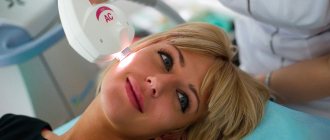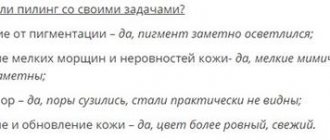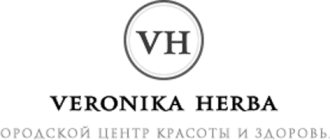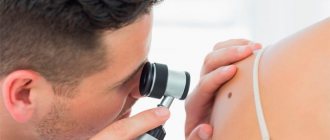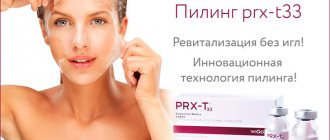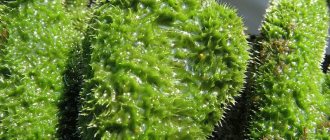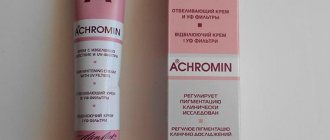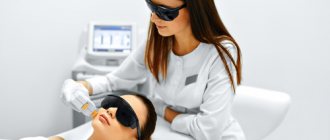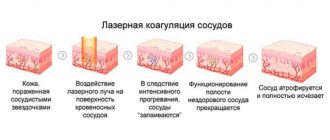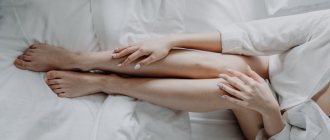Photorejuvenation is recommended for problems such as skin aging, rosacea, oily skin, rosacea, post-acne. The procedure has a number of contraindications:
- Open skin damage;
- Dark complexion;
- Pregnancy and lactation period;
- Diseases of the cardiovascular, endocrine system, lung diseases.
Also, the procedure cannot be performed for varicose veins, hormonal imbalance, cancer, tanned skin, photodermatosis and weakened immunity. It is not recommended to undergo photorejuvenation for herpes in the acute stage. The procedure is contraindicated for people with metal prostheses or wires, as well as pacemakers.
Stages of photorejuvenation
The photorejuvenation procedure is carried out in accordance with a certain sequence. A cooling gel is first applied to the skin, which improves the passage of impulses. The specialist and the client put on dark glasses. Then begin the action on the skin with the device. It is applied several times to the surface being treated and the button is pressed to turn on the flashes. After the procedure, the time of which can vary from 15 to 60 minutes, panthenol is applied to the skin. It soothes and heals wounds.
During the week following the photorejuvenation procedure, you should avoid ultraviolet radiation and do not go to the bathhouse, sauna or solarium. In the first 2 days you need to be careful with decorative cosmetics, especially with foundation. Also during the rehabilitation period you should refrain from drinking alcoholic beverages, smoking and drink more water.
Facial photorejuvenation procedure - what is it?
An intense broadband light flux, which is the essence of the photorejuvenation procedure, is generated by special devices. It is emitted in the form of pulses of various frequencies. Thanks to a wide range of settings, the specialist selects the required light wavelength and determines the time of exposure of the light to the treated area.
The essence of the photorejuvenation procedure
The principle of selectivity of the bleaching effect of light is based on the characteristics of skin pigmentation. The lighter the area of skin, the better it reflects the light beam falling on it. However, dark and hyperemic areas, on the contrary, attract radiation. Deep thermal effects ensure the destruction of melanin: pigment spots, seasonal freckles, destroyed blood vessels that form a reddish mesh are lightened and subsequently do not appear again.
Another direction of the impact of photorejuvenation is to restore the elasticity and firmness of the skin. What does photorejuvenation do and how does it work? Thanks to the targeted action of light and gentle local heating of the epidermis, the production of collagen and elastin, the main building proteins of soft tissues, is stimulated. Biochemical processes and cell regeneration are launched and accelerated, skin aging processes are inhibited, and the functioning of the sebaceous glands is normalized. The positive effect leads to improved skin turgor, reduction of wrinkles, and smoothing of scars. The skin becomes more elastic, facial contours become clearer. The face acquires a pleasant healthy shade and matteness, the pores are noticeably narrowed.
The therapeutic effect of photorejuvenation lies in the antibacterial effect of light irradiation. Thanks to this, any damage heals much faster, inflammatory processes are stopped, acne, irritation and even manifestations of herpes infection disappear.
Facial photorejuvenation - what is it: pros and cons of the method
Before deciding on a facial photorejuvenation procedure, you should definitely consult with a specialist. If you have a history of chronic, systemic or infectious diseases, you must additionally undergo a set of tests, as well as see a therapist, endocrinologist, immunologist, allergist and other specialized specialists. Important advantages of the photorejuvenation technique are:
- high efficiency of influence and improvement of skin;
- no restrictions on the area of exposure to light radiation, the method is suitable even for very sensitive skin of the décolleté and neck;
- non-traumatic impact, absence of swelling, hematomas, scars;
- no pain either during the session or after it;
- minimum exposure time ranging from 5 to 30 minutes;
- excellent compatibility with additional anti-aging techniques;
- minimal recovery period that does not require hospital stay;
- the possibility of using cosmetics, both decorative and medicinal.
The disadvantages include the individual reaction of the body to light exposure, a small list of restrictions for the procedure and some age-related manifestations.
Duration of the effect of the photorejuvenation procedure
The beneficial effect of photorejuvenation has a prolonged effect, since it consists, first of all, in stimulating internal regenerative processes, enhancing the production of one’s own collagen and elastin, and noticeably accelerating all important biochemical reactions. That is, even after the procedure is completed, your skin continues to glow and recover every day.
The result lasts quite a long time - from 6 months to 4 years, depending on the duration of exposure, as well as the initial condition of the skin and regular care thereafter. The frequency of procedures is usually 1-3 per year, but if the effect lasts for a long time, you can take your time with a new session.
Types of photorejuvenation and their features
A variety of devices can generate a luminous flux of the required intensity. Photorejuvenation - what is this procedure and what types does it happen? The classification of the methodology implies the following types:
- Laser exposure is based on the ability of a neodymium laser to emit a stream of light pulses of different lengths. The intensity of the impact can be adjusted by selecting the appropriate option in each specific case. This technique allows the effects of waves to be localized in a very small area. Their penetration depth can reach 6-8 mm, which allows the laser to be used to reduce vascular damage by coagulation. Additionally, a very intensive, but low-traumatic grinding of the skin is carried out, promoting accelerated renewal of the outer layers of the skin.
- The IPL or Intense Pulsed Light device affects the skin with a stream of light of a given length and intensity. The technique solves several problems at once: it evens out the overall skin tone, fights spider veins and pigmented areas.
- ELOS type equipment is based on the principle of electro-optical synergy. It combines methods of exposure to light pulses and current, enhancing the resulting effect due to the variety of waves.
- Photorejuvenation of the collagen type is based on the work of collagen lamps and the light they emit in the red range. It is this radiation that can penetrate deep into the skin, right down to the layer of fatty tissue and effectively stimulate the production of collagen fibers.
- The LED technique is characterized by minimal thermal impact on the treated area. LED therapy excludes infrared and ultraviolet radiation. The remaining colors of the light flux affect different depths of tissue, corresponding to the length of a certain wave.
- BroadBand Light technology is an entire medical system that allows you to safely and painlessly remove almost any benign skin defect. It successfully copes with the vascular network, as well as age spots and various neoplasms. In addition, the high-intensity broadband light generated by the device stimulates skin renewal at the cellular level, stopping the aging process. The result is noticeable almost immediately.
The difference between the VBL technique and laser photorejuvenation
What is the difference between photorejuvenation and laser facial rejuvenation? VBL skin rejuvenation is often confused with laser exposure. The reason for this is the effective impact of both methods on problem areas and the elimination of visible aesthetic defects.
However, these technologies are completely different from each other. Laser machines appeared much earlier than BBL, and have already established themselves in the cosmetology market. But BBL is a huge step forward in modern hardware cometology. The main differences between them are:
- The principle of influence on the treated surface. A laser is a thin beam of light, and BBL is a broadband pulsed radiation.
- The sensations the patient experiences during the session. BBL is gentle and completely painless, while laser therapy involves the use of local anesthetics due to noticeable discomfort, tingling and painful burning in the affected area. In the first case, slight redness goes away in a couple of hours, and after the laser a rather long rehabilitation period and the use of healing compounds are required.
- Favorable time for the procedure. Laser photorejuvenation is recommended to be carried out in the cold season, when solar activity is minimal. For rejuvenation using the VBL device, there are no restrictions on time or period of implementation.
- Complex effect on the body. The regenerative processes in the epidermis are only affected by photoexposure using the BBL device, and the laser simply removes unwanted defects without stimulating cell renewal.
Indications for VBL photorejuvenation
Before the procedure, it is important to carefully read the list of indications for photorejuvenation using high-intensity broadband light. The photorejuvenation procedure is suitable for people with the following problems:
- the presence of benign neoplasms of any etiology on the skin;
- visible pigmented areas of any size, including hemangiomas - port-wine stains;
- vascular subcutaneous mesh caused by microvascular damage and pinpoint hemorrhages;
- dull, uneven, sagging facial skin with signs of age-related changes;
- the presence of deep foci of inflammation in the form of acne, as well as numerous scars.
The main advantages of the VBL rejuvenation technique
If we compare the photorejuvenation technique with other non-invasive cosmetic procedures, its advantages become obvious. The list of advantages is quite long:
- the result is noticeable almost immediately after the end of the session;
- no side effects, as well as long and painful rehabilitation with many restrictions;
- a completely safe method of exposure that does not cause pain or discomfort;
- a large selection of functionally different flash lamps, smart filters and adapters;
- no need to use anesthetics;
- short duration of the procedure, which ranges from 5 to 30 minutes depending on the size of the treatment area, as well as the initial condition of the patient’s skin;
- prolonged action of the procedure, which retains the visible effect of rejuvenation for a period of six months to 4 years.
Photorejuvenation: contraindications and limitations
What is photorejuvenation and to whom is it contraindicated? The list of absolute contraindications is quite modest; it includes the following diseases and conditions:
- problems in the functioning of the endocrine system;
- hypertension of any degree;
- diabetes mellitus of both types;
- eye diseases such as glaucoma and cataracts;
- increased intraocular pressure, as well as clouding of the lens.
There is also a small list of restrictions that may be solely temporary:
- period of pregnancy or breastfeeding;
- acute form of infectious disease;
- exacerbation of atopic dermatitis and psoriasis;
- the presence of fresh wounds, cuts, abrasions or burns on the skin;
- children up to 16 years of age.
Preparation for the procedure
Facial photorejuvenation - what is this procedure, how safe is it and how does it affect the body? You should find out about this before the session, since the technique has a number of contraindications. Despite all the safety and painlessness of the procedure, the photorejuvenation procedure requires careful preliminary preparation. Its main stages are:
- conducting tests and consultations with specialists on possible contraindications; during consultation it is better to take a medical record or a certified extract from it, which indicates previous diseases;
- confirmation of the qualifications of the specialist who will carry out the procedure, as well as the compliance of the equipment used with safety and quality criteria;
- refusal to visit the solarium and prolonged exposure to the sun 3-4 weeks before the procedure;
- avoiding self-tanning a month before the session;
- a ban on traumatic skin care procedures at least 2 weeks before a visit to a cosmetologist, including mechanical and chemical peeling;
- refusal to visit the sauna and bathhouse at least a week before the procedure;
- Stop taking antibiotics, acetylsalicylic acid, vitamin A, ibuprofen and diclofenac a few days before the photorejuvenation session.
You should be aware that taking certain medications can cause the formation of hematomas in the area exposed to light waves. How effective is photorejuvenation? It’s easy to notice the difference before and after the procedure.
Stages of the photorejuvenation procedure
It is important to carry out the hardware procedure in a specialized office under the supervision and participation of a specialist. Find out in advance how safe facial photorejuvenation is, what it is and how to prepare for it. The sequence of actions of the patient and the cosmetologist in this case is as follows:
- The patient takes a comfortable position on the couch in a supine position.
- The area affected by the light pulse is thoroughly cleaned of traces of cosmetics and sweat and fat using a special tonic and antibacterial agent.
- The eyes are protected with special glasses that protect the cornea from burns.
- A gel is applied to the skin in the affected area to improve the passage of impulses and prevent the thermal effects of light waves.
- The area is sequentially treated with point light pulses, the length and frequency of which are selected by the doctor.
- At the end of the procedure, the remaining gel is removed with a soft cloth, and a soothing gel or cream is applied to the skin.
Recommendations for skin care after photorejuvenation procedure
The fact that facial photorejuvenation leaves virtually no traces on the patient’s skin does not mean that after it the body will feel the same as before the procedure. To minimize the risk of undesirable consequences, you should follow simple and easy to follow recommendations:
- Be sure to use skin care and restoration products recommended by your cosmetologist.
- For about a week, you will have to treat areas exposed to light waves with regenerating compounds with a soft structure.
- Cosmetic milk and tonics that do not contain alcohol can be used as cleansers.
- Maintain a water-salt balance by drinking at least one and a half liters of clean water daily.
- Support the body by taking a suitable vitamin and mineral complex.
- For two weeks after the procedure, do not go out into the open sun unless a cream with SPF of at least 30 is applied to the skin.
- Do not visit saunas and baths, and also avoid swimming pools due to the high chlorine content in the water;
- Try to refrain from bad habits such as smoking and drinking alcohol.
It is enough to follow these simple tips so that the results of the procedure will please you for a long time. Affordable and safe photorejuvenation, the effect of which allows you to feel confident for a long time - this is an excellent alternative to a scalpel and injections.
Photorejuvenation at home
To carry out photorejuvenation yourself, you need to purchase a device. This way you will save time and money on going to the salon. In addition, the effect on the skin will not be as aggressive, since the power of home photorejuvenation devices is lower.
Before the procedure, read the instructions and conduct a sensitivity test on an inconspicuous area of skin. After a day, look at the result: is there any peeling? If everything is in order, clean your skin before using the device. Next, follow the instructions and steps followed by specialists in beauty salons.
Recovery after the procedure
The recovery period, in its usual sense, is practically absent. There may be some slight redness that will go away the same day. Sometimes there is a slight, barely noticeable swelling and peeling of the skin in the first two to three days. After the procedure, the doctor will recommend using special moisturizing creams and not going outside without SPF protection. It is better to avoid exposure to sunlight in any form for three weeks, so as not to provoke pigmentation and fragility of blood vessels. Temperature changes will not bring any benefit, so it is better to avoid the bath for a couple of weeks. You should also not use cosmetics containing alcohol. Facial phototherapy goes well with other hardware techniques, such as needle-free mesotherapy, ultrasound treatment or microcurrent therapy.
Possible complications
If you do not follow the rules or use too much power, side effects such as swelling, redness and bruising may occur. Usually they go away on their own, but if after a few days this does not happen or worsens, you should consult a doctor. Swelling may last for 3 days. It will help to remove contrasting compresses and lotions made from ice prepared from a decoction of medicinal herbs.
Hyperemia is redness of the skin. It may appear along with swelling and will disappear within the same period. If there are bruises after using a photorejuvenation device, this indicates that the power of the light pulses was incorrectly selected. They may also appear due to taking certain medications 2-4 weeks before the procedure, such as antibiotics, retinoids, aspirin and ibuprofen. After consulting with a cosmetologist, you can take a whitening solution for bruises.
List of contraindications
Photorejuvenation is safe and less traumatic, so it is suitable for almost all patients, which cannot be said about surgical lifting. Of course, there are age restrictions, because laser radiation can cause complications and negative effects in children and the elderly.
Direct contraindications are:
- period of pregnancy and lactation;
- severe chronic decompensated conditions;
- acute course of skin diseases;
- severe diseases of internal organs;
- serious mental disorders;
- exacerbation of herpes;
- oncopathology.
Removal of vascular formations
Vascular disorders on the surface of the skin can be of several types and have different forms: single dilated capillaries, spider veins (rosacea) or entire “networks” of damaged vessels.
Phototherapy will be an effective solution to the problem in these cases: damaged vessels are closed (their walls seem to stick together) by exposure to a light beam; healthy capillaries remain intact. Activation of the formation of elastin and collagen in the correction area accelerates the treatment process, while simultaneously thickening and tightening the skin.
Depending on the type and size of the affected vessel, the condition of the patient’s body, the doctor will determine the required number of procedures and the characteristics of light radiation.
After completing a course of phototherapy (on average, 5-8 procedures), it will be useful to undergo one or two procedures per year to prevent the appearance of new vascular disorders.
results
We have already said that one of the advantages of phototherapy is its versatility and complex effect on all layers of the skin during one session.
The effect of light rays is such that when, for example, pigment spots are eliminated by this method, rejuvenating mechanisms in skin cells are simultaneously launched.
That is, in addition to an even complexion, without freckles and pigmentation, the rejuvenating effect of the procedure occurs as a “side effect”.
So, a course of phototherapy allows you to achieve:
- increasing skin tone and elasticity,
- elimination of rosacea and other capillary lesions,
- noticeable reduction in skin oiliness,
- narrowing of pores, disappearance of acne and blackheads,
- improving the appearance of the skin, its color and general condition.
You can find out in which clinic it will be more convenient for you to undergo a course of phototherapy on our portal.
Below are clinics and experienced doctors who perform facial phototherapy in Moscow and Russian cities. You can find out the cost of facial phototherapy services, contraindications, ratings and reviews, and also make an appointment online.
Correction of freckles and age spots
As the skin absorbs light rays and heats it up, melanin is destroyed and the pigment spot darkens.
Healthy surrounding tissues are not damaged. After some time, the treated area of the epidermis peels off and comes off. The new layer that appears has a normal shade, no different in color from healthy skin. Phototherapy for pigmentation on the face is not lightening, but rather the removal of spots until they completely disappear. For unconditional victory over freckles and age spots, a course of procedures of 3-10 sessions is carried out, with a break between them of 2-3 weeks.
The number of procedures and the intensity of exposure to light rays are determined by the doctor and depend on the characteristics of the patient’s skin, the individual characteristics of his body, the type and size of pigmentation. The effect of the first session can be seen after 10 days - after the peeling of the treated area stops.
Lumenis M22 device
The Lumenis M22 device is, first of all, an innovative solution by Lumenis engineers to combine IPL technology and Nd: Yag laser in one cosmetology device. In this connection, it became possible to combine and combine various types of cosmetic interventions to achieve an impeccable effect.
Many patients of the NuAnce clinic got rid of expression lines, scars, post-acne, spider veins and, of course, unwanted hair using the Lumenis M22 device.
The mechanism of action of Lumenis M22 is called selective photothermolysis. Light waves of different lengths interact with a specific chromophore without damaging the integrity of the skin. The energy released during this interaction destroys the source of the problem.
Who is suitable for IPL rejuvenation procedure?
There are no age restrictions for photorejuvenation. Usually, IPL rejuvenation is used according to indications, but the general recommendations are as follows: the optimal age range for the first use of the procedure is 27-35 years. By starting to perform it at this age, you will protect your skin from rapid age-related changes, strengthen its health and prolong youth.
What problems does IPL photorejuvenation solve?
The most common indications for photorejuvenation are hyperpigmentation and telangiectasias ( “rosacea”, spider veins, rosacea ). This is due to the fact that the light energy generated by the device is absorbed simultaneously by two types of target cells - oxyhemoglobin and melanin. Thanks to this, it is possible to “glue” the dilated capillaries and layer-by-layer coagulate melanin cells concentrated in the areas where pigment spots are localized.
Examples of vessel and pigment removal using our Lumenis M22 device
In addition, photorejuvenation leads to warming up and stimulation of the “proteins of youth” - collagen and elastin. This provides a thermolifting effect - non-surgical tightening of skin and soft tissues that have sagged due to gravitational ptosis.
The majority of patients who underwent the procedure against age spots noted that the skin became denser, firmer and more elastic, the characteristic age-related “pastiness” was eliminated, the pore pattern narrowed and the color evened out.
Private reasons to do photorejuvenation:
- Lightening of freckles and age spots;
- Elimination of dilated subcutaneous vessels;
- Smoothing of facial, linear, mesh wrinkles;
- Increased skin tone and contractility;
- Tightening weak and “empty” skin;
- Treatment of acne (acne);
- Correction of stagnant scars and post-acne spots;
- Softening scar tissue of mild and moderate scars;
- Narrowing of pores;
- Normalization of sebum production.
Equipment parameters are set individually, depending on the patient’s skin phototype and individual tasks.
Cost of the procedure
If you have age spots or “dirty” skin, the cost of rejuvenating the entire face is 10,000 rubles .
If you have vascular formations , then it all depends on the area of correction: for example, removing blood vessels on the wings of the nose costs 3,000 rubles , removing blood vessels on the cheeks costs 5,000 rubles .
If you are not yet familiar with our cosmetologists and our rejuvenation clinic, then take advantage of a special 15% discount on your first visit !!!
There is also a 25% discount on the course of procedures if you need to solve several problems! Call us, we will advise you on any questions!
Carry out the procedure with a 15% discount!
We have many promotional offers, the main one: 15% discount on your first visit! We will select the best for you!
I want a discount!
Thank you!
Information has been sent to the clinic administrators!
Causes and types of skin aging
Content:
- Causes and types of skin aging
- Preventive measures to prevent aging processes
- Methods and techniques for skin rejuvenation: photorejuvenation
- What is facial photorejuvenation procedure?
- Types of photorejuvenation: main differentiation
- Possibilities of photorejuvenation: what to expect from the procedure
- Indications and contraindications: in what cases is photorejuvenation prescribed?
- Technique of the procedure
- After the session: how to care for your skin
- Photorejuvenation at home: how realistic is it?
The skin is the first and main barrier of the human body, which daily and fully experiences all the influences of the environment. Under the influence of the sun, wind, temperature changes, polluted air, aggressive cosmetics, improper care, excessive or insufficient humidity, skin cells lose moisture, become thinner, and lose their ability to regenerate. The production of collagen, a protein responsible for the elasticity of skin fibers, decreases in the skin.
In addition, any health problems are displayed on the skin - hormonal imbalances, disturbances in the digestive tract, nervous and cardiovascular diseases.
Age-related hormonal disruptions negatively affect the condition of the skin, when metabolic processes in the layers of subcutaneous fatty tissue are disrupted and muscle tone decreases.
Signs of aging can be wrinkles (facial, static and gravitational), age spots, sagging skin, swelling, uneven skin color, thinning, as a result of which the vascular network becomes clearly visible.
Aging can be natural or premature. The first type of process is genetically inherent in human cells, and its natural development cannot be stopped. As for premature aging, various factors can contribute to it - poor diet combined with bad habits, excessive tanning, acute and chronic diseases, and environmental exposure.
